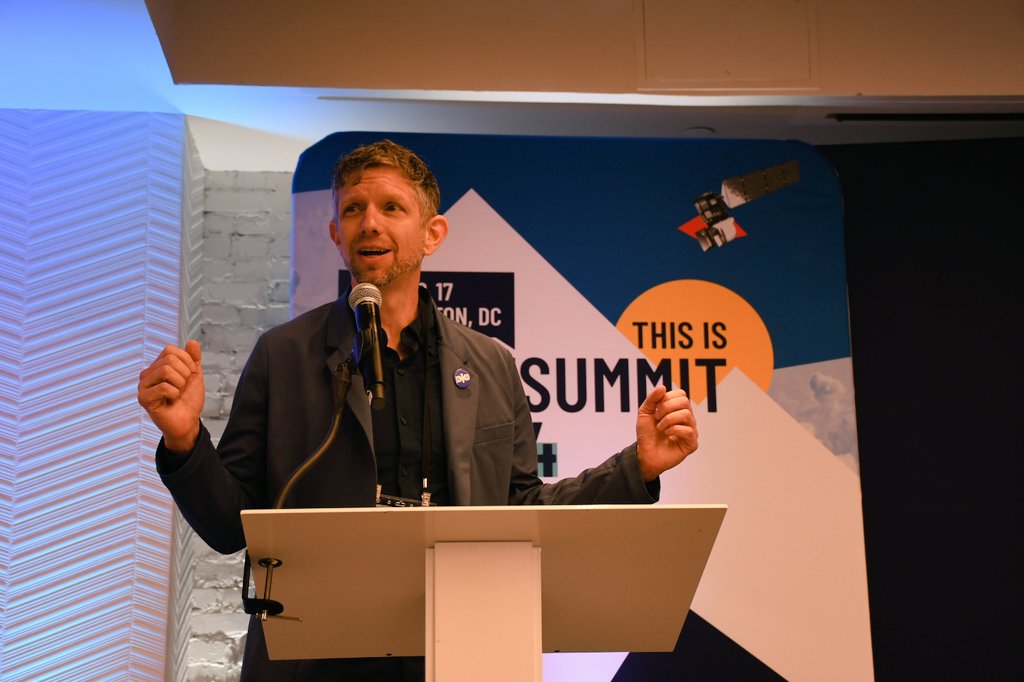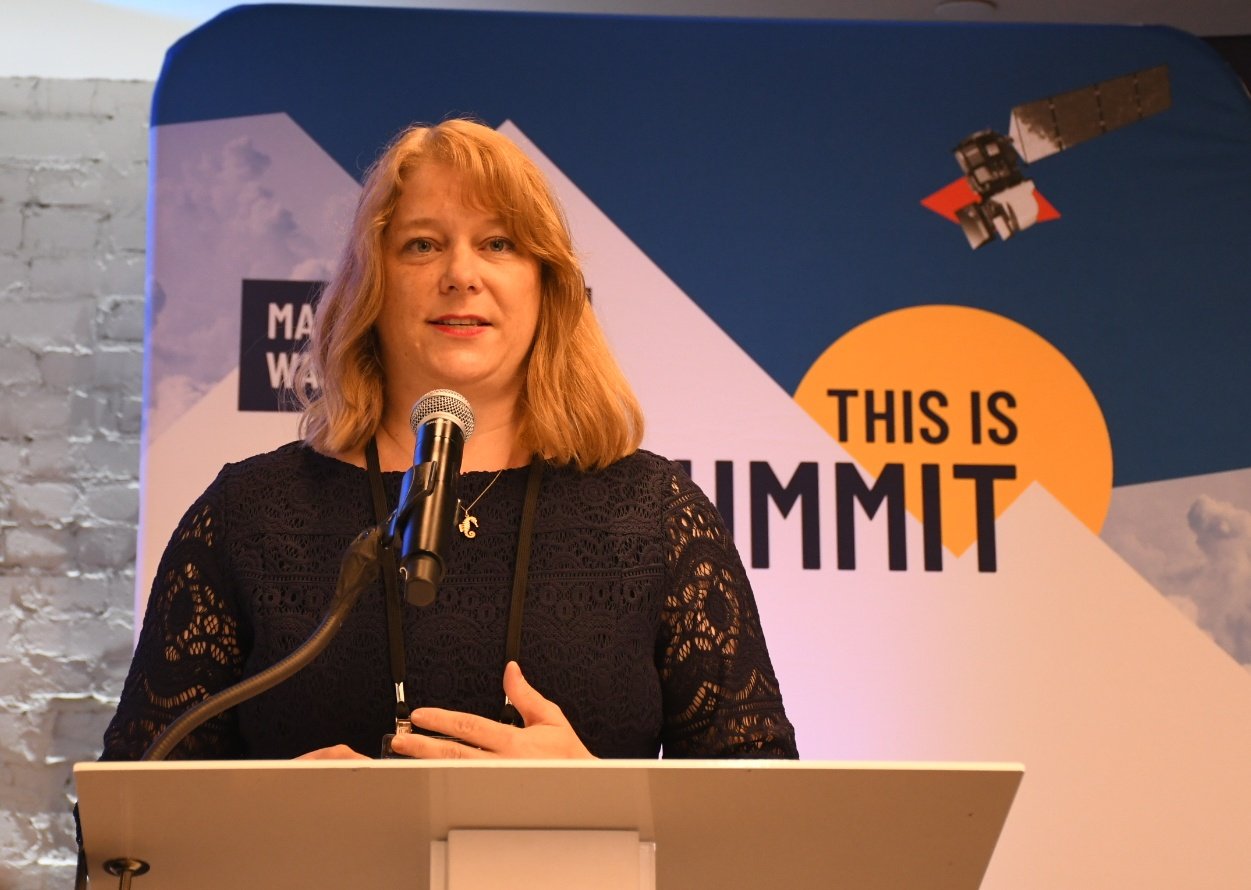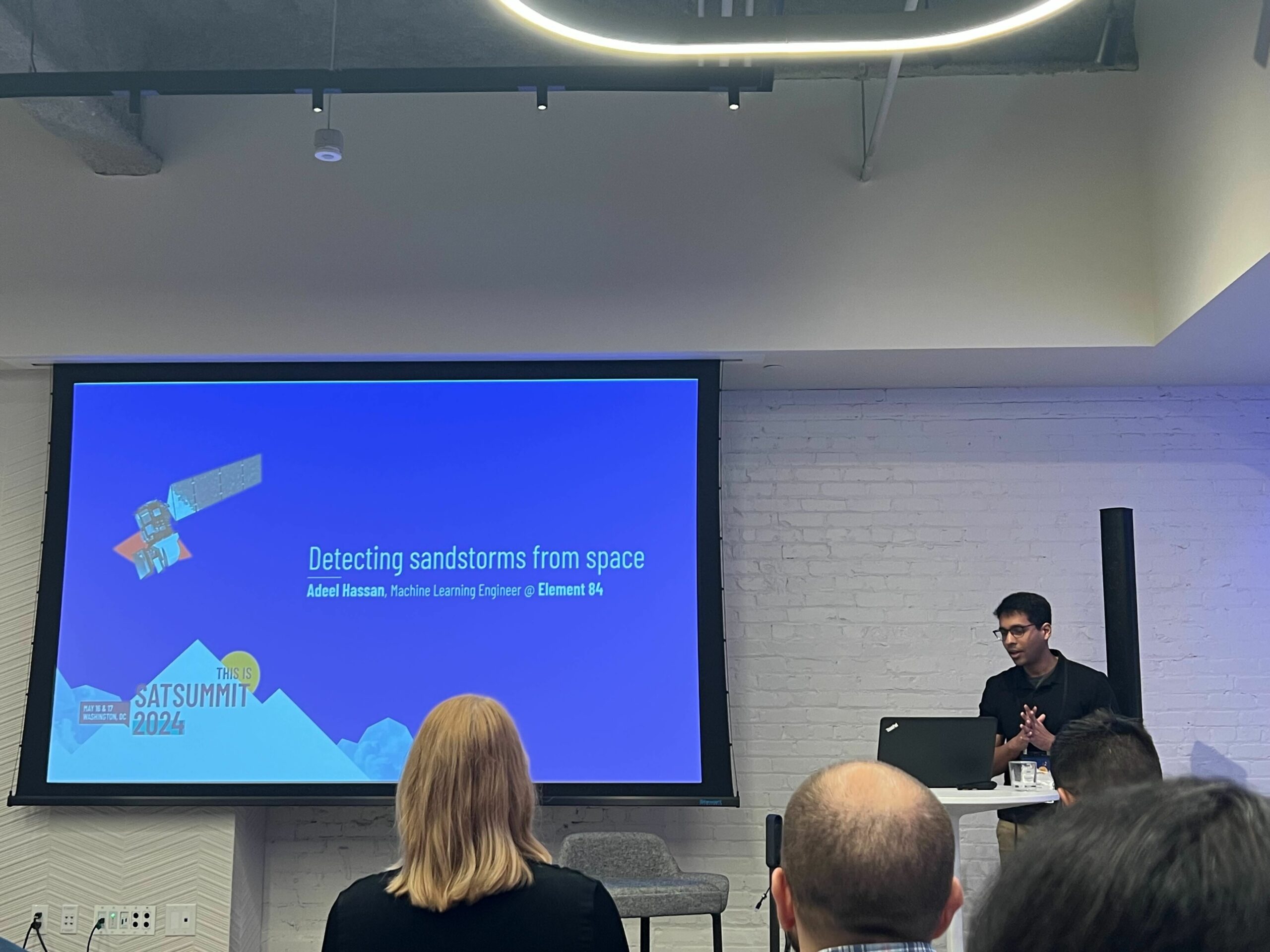Earlier this month, our team attended SatSummit in Washington, DC. Hosted by Development Seed and DevGlobal, SatSummit is one of our favorite events in the geospatial community. When we attend industry events like SatSummit, we’re excited to be introduced to new ideas while also connecting with old friends and peers. With a community as interconnected as the folks who attend SatSummit, it’s no surprise that certain ideas tend to repeat themselves over the course of a conference week. In this post, I’m recapping a few of the trends our team noticed at SatSummit, and we’re outlining how we plan to integrate these trends into our work.

1. Foundation models and the evolution of ML/AI
Foundation Models are a hot topic across the tech space more broadly at the moment, so it’s no surprise that they were heavily discussed at SatSummit. Specifically we were introduced to Clay, a non-profit, “on a mission to make Earth observation as useful and ubiquitous as a Google search”, and their newly released open-source foundation model. While Clay is still fairly new, we’re excited to see this model and others like it gain momentum in the space so that we can add them to our existing capabilities.
One of the things that foundation models provide is high-quality vector embeddings (compressed representations of complex high-dimensional data). During one talk, Ben Strong said, “Vector Embeddings are the ultimate ARD (Analysis Ready Data).” This is key, and has huge potential when working with vector embeddings created from a model like Clay. We’ve done quite a bit of work with vector embeddings already, so we’re excited to see continued advancement in this area. You can read more about what’s possible with vector embeddings in our blog posts featuring unsupervised change detection and Queryable Earth.
Although excitement surrounding foundation models was the overwhelming sentiment throughout the conference, there was no shortage of conversations critiquing and analyzing the latest in ML/AI advancements. During her opening talk about the State of AI, Amy Larson, PhD emphasized the need to spend more time making data better versus making the model better. This applies as much to modern foundation models and Gen AI systems as it traditionally has to supervised ML in the past. In our own experience working on Retrieval Augmented Generation (RAG) systems, utilizing clean data has the potential to dramatically improve results – so this definitely resonates.

During a collection of lightning talks, Ritwik Gupta also expressed skepticism about the current crop of geospatial foundation models in his talk, “Modern Geospatial Foundation Models Are Not Foundational”. Although we’re excited to continue to incorporate foundation models into our work, maintaining a healthy level of skepticism is important to avoid forgetting the importance of prioritizing good data. E84’s own, Adeel Hassan, contributed to the ML lightning talks as well by recapping his work training a sandstorm detection model.

2. Avoiding imaginary users and decision makers
In addition to the more technical trends discussed throughout the conference, there was a strong focus on making sure that the solutions we build actually solve the problems they’re designed to solve. To take this one step further, it’s important to make sure that we fully understand the users and decision makers we are building the solution for.
In our day-to-day work, we’re in the business of helping our clients solve some of the world’s biggest problems. Because of how big picture and ambiguous it can sometimes feel, this topic is crucial for us – it can sometimes be tricky to make sure that the goal of a project is clearly defined from the beginning. As Katie Wetstone from DrivenData shared, “There is a disconnect between what gets developed and what folks actually need.”
Sometimes, this misalignment occurs when the development or design team builds a solution without a clear directive or understanding of the audience. Throughout SatSummit, this phenomenon was referred to as “imaginary decision makers or users” after it was referenced by Jed Sundwall, Executive Director at Radiant Earth, in his opening talk.
Since so many of us in this community are interested in solving big global problems with nuanced local solutions in one way or another, we don’t have time to waste developing projects that don’t solve the problems they’re intended to solve. Our approach to tackling this issue is through our discovery phase that we weave into many of our projects. Through implementing this level of understanding as an intentional part of our work, we’re able to ensure that our users and decision makers are not only very real and tangible, but they also are able to have a strong voice throughout their time working with us.
3. Earth Search as a key API
Earth Search, our STAC-compliant search and discovery API, brings petabytes worth of Geospatial Open Datasets from the Registry of Open Data on AWS to users while allowing them to quickly and easily interact with their data of interest. Although Earth Search isn’t a new API, it popped up quite a bit at SatSummit this year.
Through several presentations and conversations, we were excited to hear about various applications that utilize Earth Search API. Startups and established firms alike rely on it for the search and discovery of Sentinel data. According to Sina Kashuk, Co-Founder and CEO at Fused, “Earth Search is providing a core service upon which everyone is building.” We’re happy we’ve been able to expand the cloud-native distribution of Sentinel data and watch the applications that it enables.
Our 2024 Geospatial Tech Radar
In the spirit of sharing geospatial trends, we’d be remiss not to mention that our team is currently working to spin up our second annual edition of our Geospatial Technology Radar. Like last year’s edition, the radar is focused on emerging technology and ideas, while functioning as a knowledge-sharing platform for the geospatial community. This year, we’re excited to open submissions to the broader community to ensure the most cohesive picture of up-and-coming tech possible. If you’re interested in submitting an idea to be considered for the radar, fill out this form.
Stay in touch
Do you have more thoughts about implementing foundation models in your work or making sure your solutions reach the right audience? If you’re interested in discussing any of the trends we highlighted in this blog further, we’d love to hear from you. To touch base with our team, send us a message on our contact us page.

